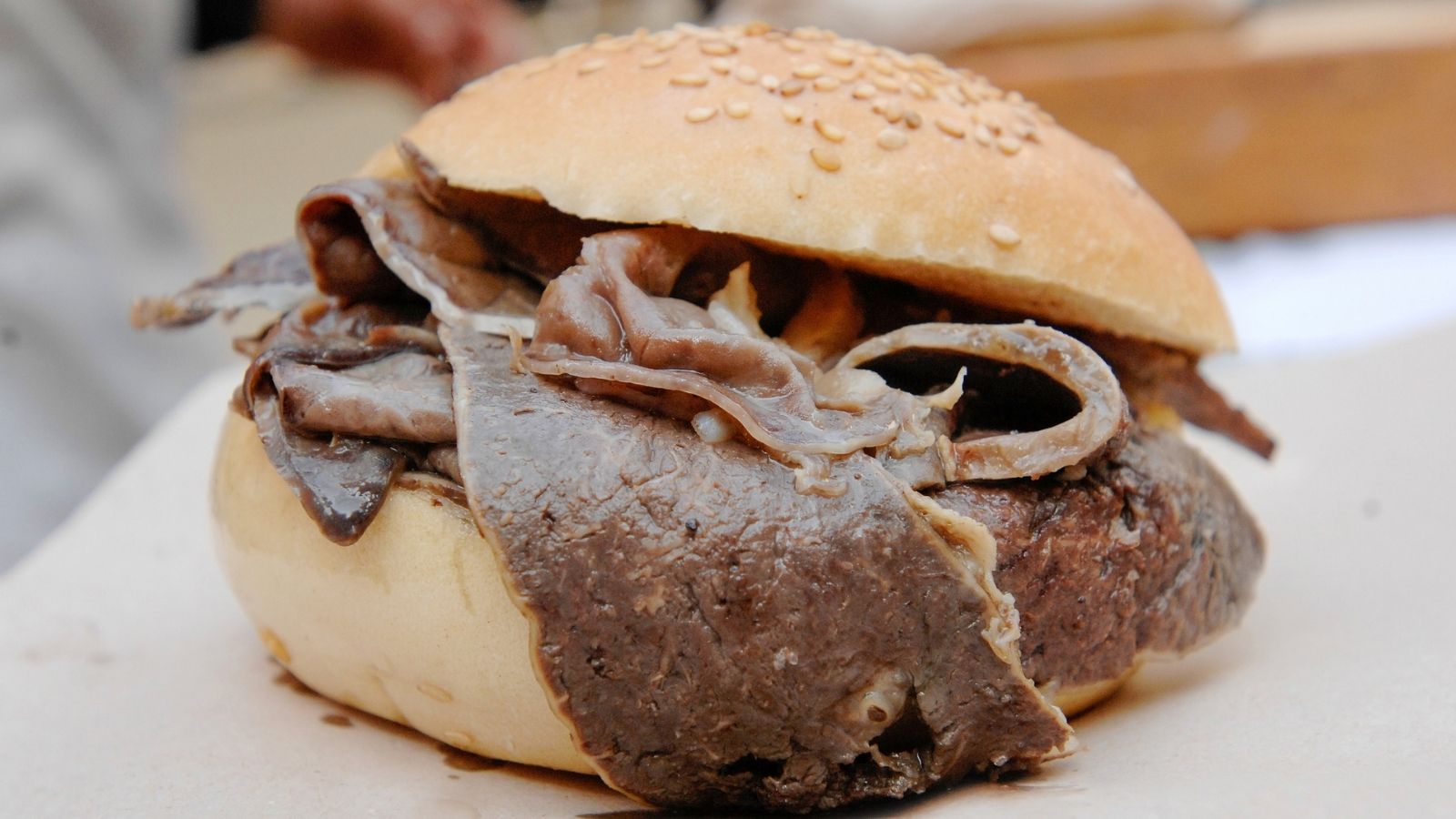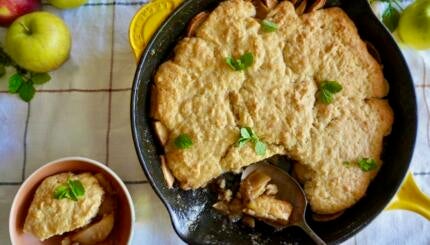Biting into a pani câ meusa is like being transported back 1,000 years to when Sicilian Jews dominated the sandwich market. Called “pani câ meusa” in Sicilian, “pane con la milza” in Italian, and “bread with spleen” in English, the recipe is a sandwich of fluffy bread and boiled veal lung and spleen fried in lard and topped with cheese. This may sound unenticing, but once you watch elegant women with leather purses gorging next to a pack of teenagers it’s hard not to be curious.
The fact that a spleen sandwich could be so widely cherished surprised me enough to look into its history–and I was even more surprised to find it actually has Jewish origins. Pani câ meusa dates back to the Medieval era, before a 1492 decree during the Spanish Inquisition drove over 25,000 Sicilian Jews either out of Sicily, or into conversion or crypto hiding. At the time, Jewish butchery was considered sacred, and thus not something for which to accept payment. Instead, butchers were compensated with the remaining offal, which they then fried in lard and sold to Gentiles in the form of a sandwich to make money on the side. Pani câ meusa became so popular that even after the Jews were expelled, it remained a beloved tradition that lasted through the conquest of many other empires occupying Sicily for millennia. Today it is one of the few visible traces of Jewish culture that remain, besides chance street names with Hebrew letters written beneath them.
Pani câ meusa has cult status in Palermo, itself a food mecca in a country where food is identity, self-expression, and love-language all at once. There are multiple meusa sellers (meusari) whose families are famous for making them for generations. Rocky Basile has a viral YouTube documentary made about him, and his cart is listed on Google Maps, while Nino U’ Ballerino (who has his own YouTube tribute) is nicknamed “The Dancer” because of his graceful yet speedy movements as he shakes off excess lard.
Strangely, when I finally had my first bite, I forgot my surroundings and found myself reminded of 2nd Avenue Deli dinners of my childhood with my great-aunt Estelle. For New York Jews, lining up for a heaping pile of hot meat on sandwich bread is a familiar ritual, and I would say that spleen is merely like an extreme-sports version of pastrami. The flavor has the same fatty sweetness (because of the lard) and like rye, the “vastedda” bread acts as a grease-absorbent cloud, topped with sesame seeds. For a sour kick, rather than mustard, you can order the sandwich “schietta” which means “single” — with just a spritz of lemon — or you can have it “married” (maritata), covered by a wedding veil of cheese.
The Nosher celebrates the traditions and recipes that have brought Jews together for centuries. Donate today to keep The Nosher's stories and recipes accessible to all.
It can feel rare to have an experience of identification with Jewish history in Europe that isn’t bound up with loss or, as a fellow wandering Jew from Brooklyn once described it, “Holocaust vibes.” This is especially true in Italy, a region with deep history, yet much of its Jewish history erased during the Spanish Inquisition and the Nazi occupation. It’s comforting, then, that the appeal of hot meat sandwiches transcends time, geography, class, religion or language. Pastrami itself was originally borrowed from a Romanian recipe, and pani câ meusa merges Jewish and Sicilian influence. As the Italian saying goes: “Tutto il mondo è paese.” The whole world is just a village.



